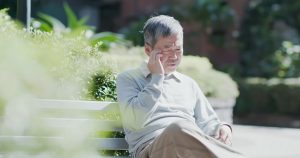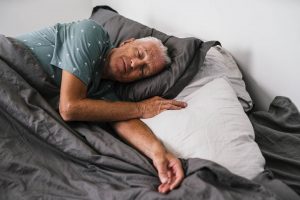Adelaide researchers have found that high life-space mobility amongst residents of residential aged care services is associated with lower long-term mortality, fewer falls, and improved quality of life.
Life-space mobility measures a person’s ability and opportunity to move within and outside of their environment.
Healthier for longer
“Healthy ageing is influenced by a person’s intrinsic capacity as well as the environment the person interacts with,” said Professor Renuka Visvanathan, Head of Unit, Aged and Extended Care Services, The Queen Elizabeth Hospital.
Assessments of physical mobility, such as walking ability, have long been used to predict adverse health outcomes for people as they age.
Life-space mobility factors in how people interact with their environment in everyday life.
Community-based studies had previously shown that low life-space mobility is associated with higher rates of frailty and malnutrition.
However, no studies in nursing homes had examined the relationship between life-space mobility and these factors or sarcopenia, an important age-related loss of muscle mass and function.
“The first question we sought to answer was ‘is life-space mobility actually important in a nursing home setting?’ and if it is, ‘what can we do to promote better life-space mobility among residents of residential aged care services?’” said Dr Agathe Daria Jadczak, Postdoctoral Research Fellow at the Basil Hetzel Institute for Translational Health Research.
This research, which aimed to assess factors influencing life-space mobility as well as outcomes related to life-space mobility, capitalised on data from the Frailty In Residential Sector over Time (FIRST) Study, a longitudinal study involving twelve residential aged care services across South Australia.
Better mobility, better health
The research team found that high-life space mobility was associated with better nutritional status, lower frailty, and lower risk of sarcopenia as well as better quality of life and a lower risk of falls and death 12 months later.
“These data show that life-space mobility is a very important parameter to look at. We need to promote high life-space mobility not only amongst residents and staff, but also spread the message to building designers as life-space mobility has also been associated with the architectural design of a nursing home,” said Dr Jadczak.
In fact, residents with high life-space mobility were 2.9 times less likely to experience a fall, and 7.9 times more likely to be alive 12 months later, compared to residents with low life-space mobility.
“A lot of nursing home residents might think ‘the more I move, the higher my risk of falling’, but it’s actually the opposite,” said Dr Jadczak.
The research team believe this research could also be helpful for the design of future nursing homes to promote high life-space mobility, so people are empowered to leave their room to access shared spaces, for example.
“We want to encourage movement in the nursing homes, remove barriers that prevent residents wanting to move around, and make communal areas attractive for residents to go,” said Dr Jadczak.
Professor Renuka Visvanathan and Dr Agathe Daria Jadczak are with the Adelaide Geriatrics Training and Research with Aged Care (GTRAC) Centre, Adelaide Medical School, University of Adelaide, and the Aged & Extended Care Services, The Queen Elizabeth Hospital.
This research was conducted in collaboration with Resthaven Inc. with funding support from the Hospital Research Foundation, Resthaven Inc. and the Premiere’s Research and Industry Fund Research Consortia Program.



